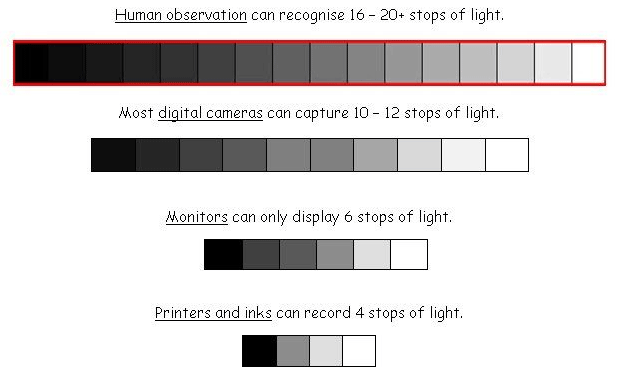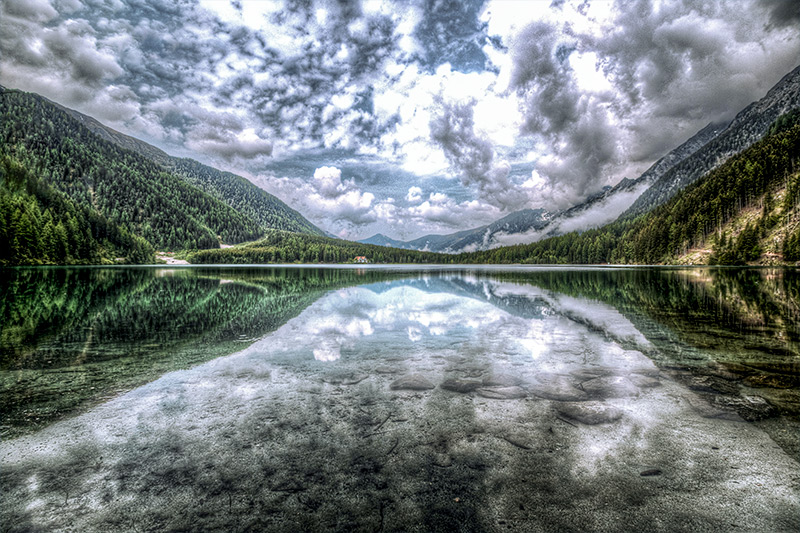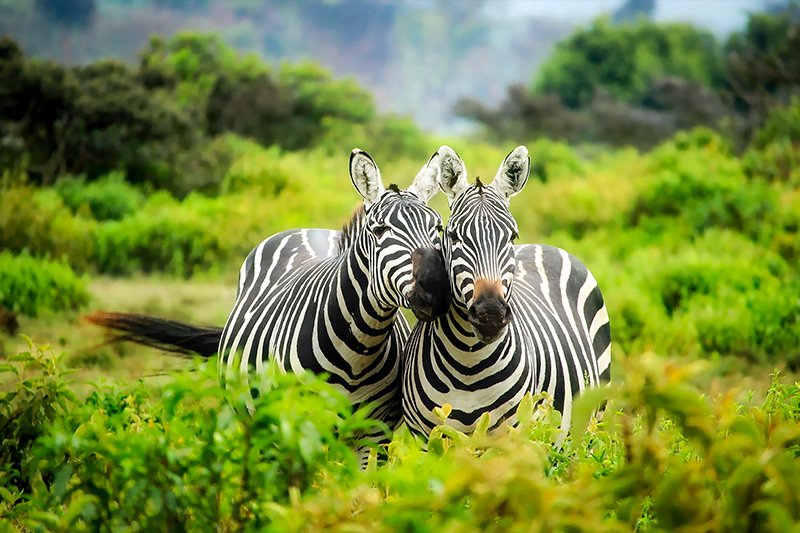Dynamic range is one of those things beginning photographers don’t really concern themselves with. Beginners usually head out with their cameras and take photos of nature, people, and animals. Everything looks good at this point. Pictures are crisp and clear and the world is perfect. It’s not until a photographer begins looking at the details and wondering why things are the way they are. Why is this shadow area so black? Why is this bright area so white? Yes, it’s usually not until the beginner becomes a novice that they worry about dynamic range.
What is Dynamic Range?
What is dynamic range, anyway? Well, to answer that question in the most succinct way possible, dynamic range is the range between what can be seen in an image, in a detailed way, between the brightest and the darkest tones. The many types and styles of cameras available differ greatly in their abilities to record detail between the lightest and darkest areas of a scene. If a particular camera has the ability to capture a photo and have detail clearly present between a wide range of bright and dark tones, then it would be characterized as having a high dynamic range. Conversely, if a particular camera captures a photo and the detailed range of tones is narrow, it would be characterized as having a low dynamic range.
Here’s a great example of what dynamic range looks like. It compares the visible tones of the human eye, the majority of DSLR cameras, computer monitors, and printers.

I’d give the graphic a credit, but the website from which it came is no longer available.
When Do We Need High Dynamic Range?
Do all cameras need to have a high dynamic range? When is it most important to use a high dynamic range camera? The answers to these questions depend on what types of scenes you’re shooting. If you are shooting a scene that doesn’t contain any particularly dark areas or bright areas, then any camera will likely do just fine. It’s not until you begin shooting scenes that include high contrast areas. Areas that are wildly different in their tones, such as the entrance to a dark cave with the sun shining behind that entrance. In situations like this, you’d want your camera to record as much detail of the dark areas as possible as well as the detail of the bright areas. It’s not likely that you’ll be able to record details in both tonal areas though. Your camera will most likely choose one or the other. It’s the same way with humans. Think about looking past a tree branch directly into the sun. Because the scene is so bright, you probably won’t be able to see any detail on the branch. It’s not until you put your hand up to cover the sun that you’ll have the ability to clearly see the branch. If our dynamic range was greater, we’d have the ability to see detail in both the sun as well as the branch.
How Do We Obtain the Best Dynamic Range?
As you can see in the image above, the human eye can see a vastly greater range of tones in a scene when compared to cameras, monitors, and printers. Because of this, it’s important that we adjust our photography accordingly. When photographing high contrast (dynamic range) scenes, you’ll need to choose one tonal range over another. It’s been said that it’s better to shoot the darker tones more accurately, rather than the brighter tones, because it’s easier to correct the brighter tones later on in post-processing. Apparently, cameras record detail in brighter tones more easily than their darker counterparts, so effort is required to obtain the darker details. Ideally, you’ll take multiple photographs, one for each tonal range, and then combine the images later on in Camera Raw or Photoshop.
What is HDR Photography?
As I just alluded to, the absolute best method for obtaining the highest dynamic range in any ultimate photograph is to capture multiple photos of the same subject, but bracket the exposure in the shots. In other words, you’d take three to five photos quickly in succession, the first capturing detail in the darkest parts of the scene, the second capturing the mid-tones, and the third capturing detail in the brightest parts of the scene. Then, you’d run all three photos through an HDR processor that merges them and uses the best parts of each. Because the images are able to be edited even further after they’ve been processed as an HDR, their results can differ drastically. For instance, the top image below is rather extreme while the bottom image is much more realistic. Both are HDR photographs.


In both images, the darkest darks and the brightest brights were captured.
What About Camera Sensor Size?
If you’ve been struggling with a lack of detail in some of your photographs and are perhaps looking to buy a new camera, a prime consideration would be what size sensor the camera you’re interested in comes with. In general, the more expensive the DSLR, the larger the sensor. Sensors come in two different sizes for DSLR and mirrorless cameras; full frame (35mm full frame) and cropped (APS-C). When it comes to compact cameras and smart phones, the sensors are rather tiny. They come as 1/1.8 size when compared to full frame sensors. Full frame sensors are able to capture much more detail at both ends of the spectrum than compact cameras can. It really boils down to all that sensor surface area absorbing all that light. The smaller the surface area, the less light the sensor is able to absorb. So if you’re very serious, be sure to purchase a DSLR camera with a large sensor.
Dealing With Contrast
Contrast looks great in photos, but can be difficult to capture accurately. When shooting high contact scenes, you may need to follow the HDR route I described above. When shooting subjects that are meant to be softer, such as organic beings like humans and animals, you may want to soften the scene with a lighting strategy that fills in the darker areas. If you’re shooting natural subjects outdoors, harsh sunlight can make your job much more difficult. It’s sometimes best to wait until the sun is lower in the sky or there’s some cloud cover to soften the light as much as possible.
Dealing with tonal range, contrast, and dynamic range can be challenging when it comes to photography, but there are plenty of strategies and pieces of equipment to help you out. Whether you change the scene, change your gear, or edit your photos afterwards, there’s a good chance your resulting images will be outstanding.
Do you have any questions about dynamic range as it pertains to photography? If so, leave them below and I’ll do my best to answer them. Do you have anything to add to what I shared above? If so, leave that below too. I’d love to learn more. Thanks!
Leave a Reply